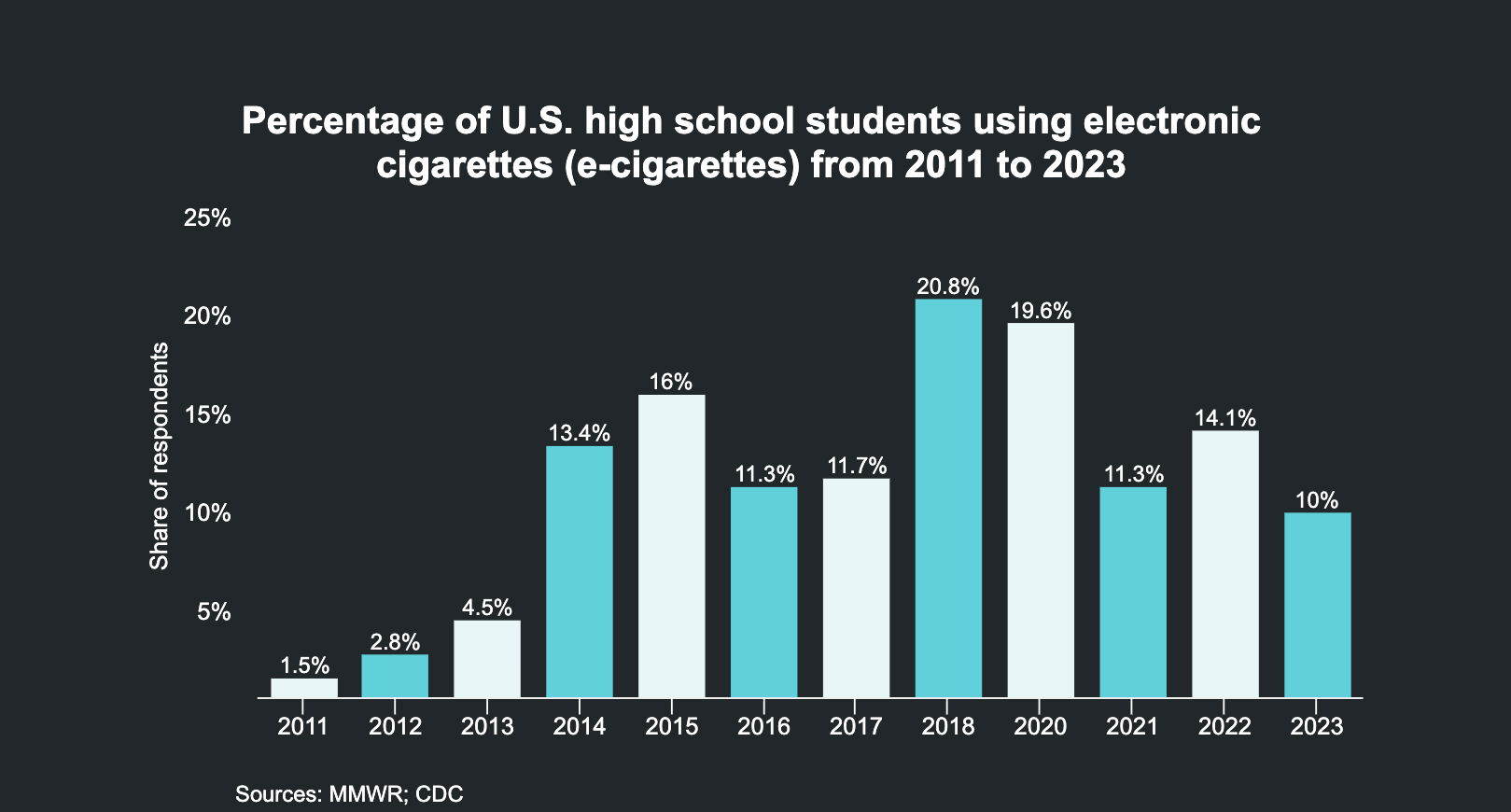Q: How does vaping affect young people’s health?
A: Teens who vape are 3 to 5 times more likely to start smoking cigarettes than their peers. They also have higher rates of asthma-like respiratory symptoms and report more mental health challenges.
Q: You study how marketing shapes vaping in America. What makes vapes so attractive to kids and young adults?
A: For decades, cigarette ads were designed to appeal to targeted audiences like women, people of color and young people. Cigarette companies would sponsor concerts and sporting events so that young people would associate smoking with social life. Today, thanks to regulation, cigarette brands can’t sponsor those types of events. But because vapes are not cigarettes, they’ve been able to do sponsorships, giveaways and other kinds of really appealing advertising that’s no longer allowed for cigarettes.
And vapes, for a long time, have been marketed like pieces of technology to escape the negative connotations young people have towards traditional cigarettes.
Lastly, a lot of vapes are advertised on social media, where it’s very hard to regulate. Juul is a great example: That company deliberately sought out social media influencers to talk about their products and use them; the company gave away thousands of free Juuls at parties — they manufactured a trend.
Q: Why are flavored vapes bad?
A: Vapes come in thousands of flavors, and some are really appealing, like bubble gum, crème brûlée, and chicken and waffles. Even if teens aren’t interested in nicotine, just curiosity about the flavors can be enough to entice them. Because vapes deliver nicotine efficiently, it doesn’t take long to get addicted.
Q: How has the FDA tried to reduce kids’ access to vapes?
A: Currently, the U.S. Supreme Court is grappling with the latest in a string of court cases brought by vape and e-cigarette makers to challenge the Food and Drug Administration’s (FDA) ability to regulate the products.
When the FDA started regulating tobacco in 2009, it had no authority over electronic cigarettes. It took until 2016 for the FDA to gain the authority to regulate the sale, advertising and distribution of e-cigarettes.
Technically, the FDA must approve all vapes before they can be marketed. But the FDA has only approved 34 vape products out of the hundreds publicly available.
The FDA sends warning letters to companies doing particularly bad things, like those selling vapes that looked like toys, video games and highlighter markers. But it’s challenging because there are so many kinds of vapes. Companies exploit loopholes in regulations, and regulations haven’t kept up.
Q: UCSF is home to the Truth Tobacco Industry Documents, the world’s largest archive of previously secret Big Tobacco papers. How are researchers using these to uncover new insights into tobacco industry tactics?
A: Right now, the Center for Tobacco Control Research and Education is one of the first research bodies to begin digging into the recently acquired Juul documents. We’re looking at those papers and other companies’ collections housed in the archive to uncover how companies’ tactics exacerbate health inequalities using targeted marketing or attempts to influence community leaders.
We’re also examining papers to see how the industry influenced scientific research and policies and how that impacted communities that are already disproportionately affected by tobacco’s health impacts.
Pam Ling is supported by a TRDRP award (picture on top right side).


